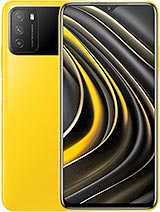Poco M3 Pro 5G review By GSMArena Official
Hey, what's up guys will here for GSM arena 5g connectivity at a low price? That's something we're starting to see a lot of, and the latest device with this sort of marketing is the Poco m3 pro 5g. This is a phone that might seem pretty familiar to some of you. So let's see what it has to offer in our full review. The Poco m3 pro 5g is a new phone from Xiaomi. That's identical to another new phone from Xiaomi. Can you guess which one, if you said Redmi Note 10 5g, then I'd be pretty surprised actually but kudos to you for being one of the special few that can keep track of Xiaomi's, convoluted project release and naming scheme? The specs of these two phones are exactly the same.
The only major difference is the appearance. Both are made of plastic, but the Poco has a glossy finish. That looks like glass, and it also has that snazzy black accent around the black camera bump and if you're still confused, at least it says Poco right there in big letters. It's worth noting that there's no ingress protection on either this device or the Redmi, and you can find that on some competitors, even at this price, the display of the Poco m3 pro 5g is a 6.5 inch, IPS LCD with a 1080p resolution and is protected by gorilla glass, 3. , again, no difference from the Redmi, as is the trend.
These days, the display has a fast 90, hertz, refresh rate, which helps smooth out movement when you're, swiping and scrolling. This screen is quite decent for an LCD. It's contrast with impressively deep black levels and brightness is good. We measured around 410 nits maximum with the slider which boosts up to around 530 nits in auto mode when in bright sun colors can be pretty accurate too. If you tweak them in color settings.
There is no hdr10 support here, though, there's a single bottom firing loudspeaker for your audio, and it scored a good mark on our loudness charts. The sound quality here is good, too, for a budget phone with well-presented, mid and highs, but not much for bass. You also get a headphone jack on the Poco m3 pro 5g, as well as FM radio support. Waking up and unlocking the phone can be done with the side mounted fingerprint scanner. Slash power button is superfast and responsive as you'd expect from Xiaomi, and you can opt for 64 or 128 gigs of storage on board, which is expandable through micros.
The interface of the Poco m3 pro 5g is polo's version of mini 12 over android 11. The Poco flavoring means that the system theme and icons are different by default and the app drawer is mandatory. You can't disable it. You do get the option to split the traditional notification shade into a notification center accessed from the top left corner and a control center, which you'll enter by swiping the top right, and since there is an IR blaster, you can use the phone as a remote control for certain appliances. Just like the other budget, 5g smartphones we've seen recently, the Poco m3 pro 5g runs on a MediaTek density 700 chipsets.
Besides the connectivity, it also provides acceptable performance for the class. Unfortunately, benchmarks wouldn't run on a review unit. Just like we experienced with the Redmi Note 10 5g, but the UI and apps run smoothly, and although the GPU is a bit, under powered games run fine on lower graphics settings powering the phone is a large 5 000 William hour battery and in our proprietary tests it was able to score a very good endurance rating of 121 hours. The same as the Redmi Note, 10 5g, the Poco comes with a 22.5 watt adapter, but it only supports up to 18 watt charging. We were able to charge the phone from zero to just 33 in half an hour, the same as the Redmi, and not very fast.
Now on to the Poco m3 pro 5g's, triple cameras, there's a 48 megapixel, quad bay or main cam, a 2 megapixel macro cam, and a depth sensor. Photos from the main cam come out at 12, megapixels and in good light. They are excellent for this budget class. They are rich in detail and nicely sharp with low noise, mostly accurate, colors and pretty good dynamic range. The foliage rendition isn't great, but we've seen worse from much more expensive phones.
Portraits are taken with the help of the depth sensor, and they have impressive subject: separation and nice colors, but for some reason these portraits aren't quite as sharp as the ones we got from the Redmi Note: 10 5g, 2, megapixel, close-up shots from the locos macro. Camera has lively, colors and good contrast, and the detail level is good enough for this resolution. However, since focus is fixed, it can take several tries to get a photo to come out. Sharp photos taken at night with the main cam are again great for this budget class. There's a lot of resolved detail the colors look, saturated and stay true to life, and the contrast is good too.
Some detail gets smeared by the noise reduction, though- and you do see some blown highlights here and there night mode restores, highlights and also brightens the entire picture, but the processing is more aggressive, and you end up with more softness and less fine detail. You can take selfies with the 8 megapixel front facing cam, and these are outstanding for this price range. There's more than enough detail, superb contrast and low noise. The Poco m3 pro 5g can shoot video with the main cam and up to 1080p resolution at 30fps. There's no 4k recording here.
The footage has great colors good contrast and likable dynamic range. The level of detail is ok for 1080p footage on a budget and there's support for stabilization too. So that's the Poco m3 pro 5g connectivity on a budget is the name of the game. You also get a contrast high, refresh rate LCD, good battery life, nice speaker quality and a dependable camera both in the daytime and at night. If you've already seen our review of the Redmi Note 10 pro 5g, you may have experienced some d?j? vu here, but you do get a different design and in some markets the Poco is a little cheaper than the Redmi.
So that's something, of course. You should also keep in mind that, if you're not especially after 5g, then you can find nicer features at this price in a 4g device. Thanks for watching guys, stay safe and see you on the next one.
Source : GSMArena Official



























